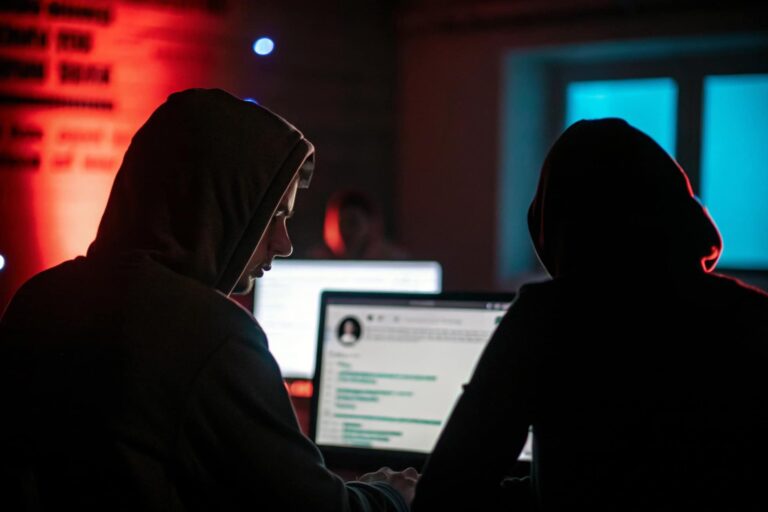Mercoffdaperc Leak: A Major Data Breach

I. What is the Mercoffdaperc Leak? – Delving Deeper
1. The Devastating Scope
- Millions Exposed: This isn’t just a minor leak affecting a few hundred individuals. The Mercoffdaperc Leak potentially compromised the personal information of millions, casting a long shadow over data privacy. Imagine not just losing your email address, but having details like home address, phone numbers, and even sensitive medical records floating around the dark web.
- High-Profile Targets: The leak wasn’t limited to ordinary citizens. Celebrities and politicians, individuals who often take extra precautions with their privacy, found themselves exposed. This adds another layer of concern, highlighting the vulnerability of even the most secure systems.
2. Unraveling the Source
- Vendor Vulnerability: While the exact cause remains under investigation, the finger of suspicion points towards a potential security breach at one of Mercoffdaperc’s vendors. This raises critical questions about third-party data handling and the interconnectedness of our digital lives. A single weak link in the chain can compromise the security of countless individuals.
- Data at Risk: The exact type of data exposed varies, but reports suggest the leak included a wide range of information, from basic demographics like names and addresses to potentially sensitive details like medical records and financial information. This diversity underlines the potential for multifaceted harm, from identity theft to targeted scams and blackmail.
3. Beyond the Headlines
- Moving Past Numbers: It’s easy to get lost in the sheer magnitude of millions of people affected. But remember, each number represents a real person, someone whose privacy has been violated. Consider the anxiety and fear individuals are now facing, the potential for financial ramifications, and the damage to their sense of security.
- A Call to Action: The Mercoffdaperc leak is a stark reminder of the fragility of our online privacy. It demands a collective effort to strengthen data security, hold companies accountable, and empower individuals to protect themselves. This is not just a technical issue; it’s a societal one, requiring vigilance and action from all stakeholders.
II. Impact of the Leak – A Tangled Web of Consequences
1. Individuals: A Target Painted on Their Backs:
- Identity Theft & Fraud: The most immediate threat individuals face is the weaponization of their exposed data. Names, addresses, and even financial information can become tools for sophisticated identity theft schemes. Imagine waking up to find your bank accounts drained, credit cards maxed out, and even loans taken out in your name. The financial and emotional toll can be devastating.
- Cybercrime’s Playground: Beyond identity theft, the leaked data opens individuals up to a range of cybercrimes, from targeted phishing attacks and malware scams to blackmail and extortion. The fear of constant vulnerability and the erosion of online safety can have a profound impact on mental well-being.
- Shattered Privacy, Scarred Reputation: The leak isn’t just about financial losses; it’s a violation of an individual’s right to privacy. Personal information, especially medical records, can be used for malicious purposes, causing reputational damage and emotional distress. The fear of constant surveillance and the feeling of being exposed can be deeply unsettling.
2. Businesses: A House Built on Sand
- Financial Fallout: Companies that mishandle data face a cascade of financial consequences. Lawsuits from affected individuals, investigations from regulators, and potential fines can cripple even the most established businesses. The cost of rebuilding trust and mitigating the damage can be immense.
- Customer Exodus: In today’s data-driven world, trust is a currency. When that trust is broken through a data breach, customers vote with their feet. Business reputation suffers, leading to customer churn and decreased revenue.
- Regulatory Firestorm: Data breaches invite intense scrutiny from regulators, who often impose hefty fines and stricter compliance requirements. Navigating these legal hurdles can be a costly and time-consuming process, further impacting a company’s bottom line.
3. Broader Implications: A Crack in the Foundation of Trust
- Tech Giants in the Spotlight: The Mercoffdaperc leak is a stark reminder of the immense power wielded by tech companies over our personal data. It raises questions about data ownership, transparency, and accountability. The erosion of trust in these institutions can have far-reaching consequences for the digital landscape as a whole.
- Call for Data Protection Uprising: The leak fuels the fire for stricter data protection laws and regulations. Individuals and advocacy groups are demanding greater control over their data and harsher penalties for companies that fail to safeguard it. This push for change could reshape the way we interact with technology in the future.
III. How Did the Leak Happen? – Unraveling the Threads of Vulnerability
The Mercoffdaperc leak exposed a vast trove of personal data, leaving millions scrambling to understand how it happened. While the full picture remains shrouded in investigation, several potential culprits have emerged:
1. System Flawed, Data Exposed
- Vulnerability Exploited: Weaknesses in Mercoffdaperc’s own systems, such as outdated software, unpatched security holes, or misconfigured databases, could have provided hackers with a backdoor to sensitive information. This highlights the critical need for companies to prioritize robust cybersecurity measures and proactively address vulnerabilities.
- Access Control Lapses: Inadequate access controls within Mercoffdaperc’s systems could have allowed unauthorized individuals or applications to access and exfiltrate data. This underscores the importance of implementing granular access controls and closely monitoring user activity.
2. Human Error, a Costly Slip-Up
- Employee Negligence: Phishing attacks, social engineering tactics, or even simple human error, like falling victim to malware or leaving sensitive data exposed, could have inadvertently opened the door for the leak. This emphasizes the need for comprehensive employee training on cybersecurity best practices and vigilance against phishing attempts.
- Insider Threat: While less likely, the possibility of a disgruntled employee or malicious actor within Mercoffdaperc intentionally facilitating the leak cannot be entirely ruled out. This highlights the importance of robust internal security measures and background checks.
3. Vendor Chain, a Fragile Link
- Third-Party Breaches: The leak could have originated from a security breach at one of Mercoffdaperc’s vendors who handle their data. This exposes the interconnectedness of our digital world and the vulnerability of data entrusted to third parties. Companies need to carefully vet their vendors and ensure they have strong cybersecurity practices in place.
4. The Investigation Continues
As the investigation unfolds, it’s crucial to remember that the full scope and cause of the leak may not be known for some time. However, by examining these potential vulnerabilities, we can gain valuable insights into how to prevent similar breaches in the future.
IV. What Can Be Done? – Rising Above the Breach
The Mercoffdaperc leak casts a long shadow, but it’s not an irreversible darkness. In the wake of this incident, individuals, businesses, and governments all have a responsibility to act and safeguard our data in the digital age. Here’s how each actor can play their part:
1. Individuals: Vigilance in the Digital Minefield:
- Fortress of Passwords: Strong, unique passwords for every online account are the first line of defense. Enable two-factor authentication wherever possible, adding an extra layer of security that makes attackers jump through more hoops.
- Scrutinize the Sharing: Before sharing any personal information online, consider the necessity and potential risks. Be wary of social media oversharing and limit the data you provide to websites and apps.
- Vigilance is Key: Regularly monitor credit reports and bank statements for any suspicious activity. Familiarize yourself with common phishing tactics and scams to avoid falling prey to cybercriminals.
2. Businesses: Building a Bastion of Data Security
- Invest in Defense: Robust cybersecurity measures are not just an expense, they’re an investment in protecting your customers’ trust and your own reputation. Regular vulnerability assessments, penetration testing, and data encryption are crucial.
- Empower the Workforce: Train employees on cybersecurity best practices, including password hygiene, recognizing phishing attempts, and reporting suspicious activity. Foster a culture of security awareness within the organization.
- Transparency Matters: In the event of a data breach, be transparent with your customers. Communicate promptly, offer support and resources to affected individuals, and outline the steps being taken to prevent future incidents.
3. Governments: Shaping a Secure Digital Landscape
- Stricter Laws: Enact stricter data protection laws and regulations that hold companies accountable for data breaches. Implement hefty fines and penalties for non-compliance to incentivize robust data security practices.
- Clear Guidelines: Provide clear guidelines and standards for data collection, storage, and sharing. Empower individuals with greater control over their personal data and give them the right to request its deletion or correction.
- International Cooperation: Data breaches transcend national borders. International cooperation between governments and regulators is crucial to sharing knowledge, best practices, and tackling cybercrime across jurisdictions.
By taking these steps, individuals, businesses, and governments can work together to build a more secure digital landscape. The Mercoffdaperc leak serves as a stark reminder of the vulnerabilities that exist, but it also presents an opportunity to learn, adapt, and safeguard our data for the future. Remember, data security is a shared responsibility, and by working together, we can create a digital world where trust and privacy flourish.
Also Read: What is “ahr0chm6ly9wcm9ka2v5cy5uzxqvexv6ds1wcm9klwtlexmv”?
V. The Future of Data Security – Rising from the Ashes of the Mercoffdaperc Leak
The Mercoffdaperc leak stands as a stark monument to the vulnerabilities of our digital age. Millions of lives uprooted, countless anxieties sown, and trust in the digital world shaken – the consequences urge us to envision a future where data security isn’t just a slogan, but an impregnable fortress.
1. New Paradigms, New Protections:
The old approaches to data security have proven insufficient. We need innovative solutions that are as agile as the threats we face. Some promising avenues include:
- Zero-trust architecture: Moving away from perimeter-based security, zero-trust grants access only after verifying every request, even within an organization’s network.
- Homomorphic encryption: This allows computations to be performed on encrypted data, keeping it secure even during processing.
- Blockchain technology: The distributed ledger system can enhance data transparency and immutability, making it harder to tamper with information.
2. Empowering Individuals, Securing Businesses:
Individuals must be equipped with the tools and knowledge to safeguard their data. This includes:
- Biometric authentication: Replacing passwords with fingerprints, iris scans, or other unique identifiers offers a more secure and convenient way to access accounts.
- Privacy-enhancing technologies: Tools like differential privacy and federated learning allow data analysis without revealing individual information.
Businesses, the custodians of vast amounts of data, have a critical role to play:
- Invest in robust data governance: Implementing clear policies and procedures for data handling, access, and deletion is essential.
- Continuous security monitoring: Staying vigilant against evolving threats requires constant monitoring and rapid response protocols.
- Prioritize employee training: Educating employees on cybersecurity best practices is crucial to prevent human errors that can lead to breaches.
3. Governments Paving the Path:
Stronger legal frameworks are needed to hold companies accountable for data breaches and incentivize robust security practices. This includes:
- Data protection laws with teeth: Legislation like GDPR in Europe and CCPA in California set a strong precedent, but stricter enforcement and harsher penalties are needed.
- International collaboration: Cybercrime knows no borders, so global cooperation among governments and law enforcement agencies is crucial to combatting these threats.
4. Uncertainties Remain, But Hope Endures:
The legal ramifications of the Mercoffdaperc leak are still unfolding, and the long-term impact remains to be seen. Yet, amidst the uncertainty, one thing is clear: data privacy is no longer a luxury, but a fundamental right. The Mercoffdaperc leak serves as a stark reminder of what’s at stake, but it also ignites a collective responsibility to build a future where our digital lives are not just connected, but secure.






